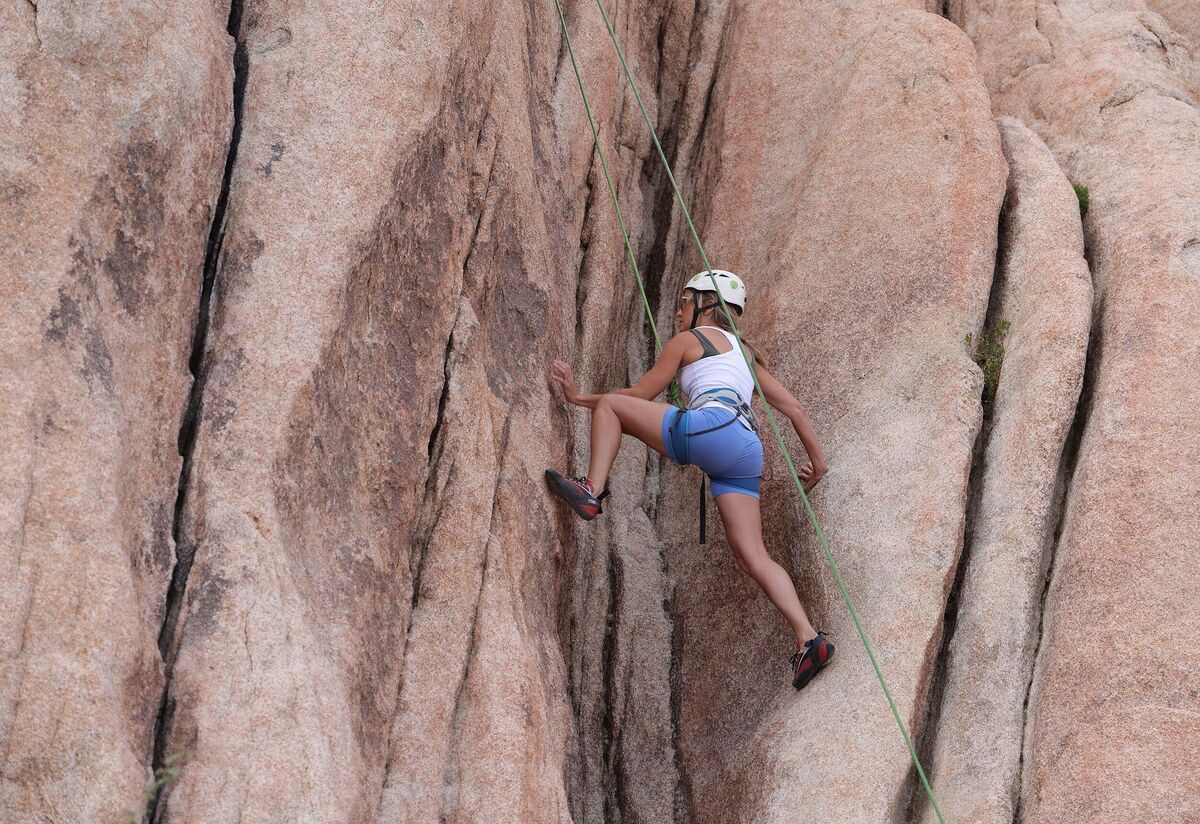
Bouldering is a thrilling sport that combines physical strength, mental strategy, and a love for adventure. Unlike traditional rock climbing, bouldering involves climbing short but challenging routes, known as "problems," without the use of ropes or harnesses. Climbers rely on crash pads for safety and their own skills to navigate the rock. This sport is accessible to beginners yet offers endless challenges for seasoned climbers. Whether you're scaling indoor walls or tackling outdoor boulders, the sense of accomplishment is immense. Ready to learn more? Here are 50 facts about bouldering that will inspire you to grab your climbing shoes and hit the rocks!
What is Bouldering?
Bouldering is a form of rock climbing performed on small rock formations or artificial rock walls without the use of ropes or harnesses. It's a sport that challenges both the mind and body.
- Bouldering typically involves climbs known as "problems" that are usually less than 20 feet tall.
- Climbers use crash pads to cushion their falls, making it safer than traditional climbing.
- The sport can be done both indoors and outdoors, offering flexibility for enthusiasts.
- Bouldering problems are often graded by difficulty, with systems like V-scale in the U.S. and Font scale in Europe.
- Unlike traditional climbing, bouldering focuses more on short, powerful movements rather than endurance.
History of Bouldering
Understanding the roots of bouldering gives insight into how the sport has evolved over time.
- Bouldering originated in the late 19th century as a training method for roped climbs.
- Fontainebleau, France, is considered the birthplace of modern bouldering.
- John Gill, an American mathematician, is often credited with popularizing bouldering in the 1950s.
- The first indoor bouldering gym opened in the 1980s, revolutionizing the sport.
- Bouldering became an official Olympic sport in 2020, debuting at the Tokyo Games.
Equipment Needed for Bouldering
While bouldering requires less gear than traditional climbing, some essential items are still necessary.
- Climbing shoes are crucial for providing grip and support on small footholds.
- Chalk helps keep hands dry, improving grip on holds.
- Crash pads are portable mats used to protect climbers when they fall.
- A brush is often used to clean holds, ensuring they remain grippy.
- Finger tape can be helpful for protecting skin and supporting tendons during intense climbs.
Physical and Mental Benefits
Bouldering isn't just fun; it also offers numerous health benefits.
- Bouldering builds muscle strength, particularly in the arms, shoulders, and core.
- It improves flexibility and balance, essential for navigating tricky problems.
- The sport enhances cardiovascular fitness, providing a full-body workout.
- Bouldering requires problem-solving skills, boosting mental acuity.
- It can reduce stress and improve mental well-being through physical activity and social interaction.
Famous Bouldering Spots
Some locations around the world are renowned for their exceptional bouldering opportunities.
- Fontainebleau, France, offers thousands of problems in a picturesque forest setting.
- Hueco Tanks, Texas, is famous for its unique rock formations and challenging problems.
- Bishop, California, provides a variety of bouldering options in a stunning desert landscape.
- Rocklands, South Africa, is known for its high-quality sandstone boulders.
- The Peak District in the UK offers classic gritstone problems.
Bouldering Techniques
Mastering various techniques can significantly improve a climber's performance.
- The "mantle" involves pushing down on a hold to lift the body up.
- "Heel hooks" use the heel to secure a hold, providing stability.
- "Toe hooks" involve hooking the toe around a hold for balance.
- "Dynos" are dynamic moves where climbers jump to reach a distant hold.
- "Crimping" is a technique where climbers grip small holds with their fingertips.
Bouldering Competitions
Competitive bouldering has grown in popularity, with events held worldwide.
- The International Federation of Sport Climbing (IFSC) organizes annual World Cup events.
- The USA Climbing Bouldering Nationals is a major event in the United States.
- The European Bouldering Championships attract top climbers from across the continent.
- The Psicobloc Masters Series features deep-water soloing, a form of bouldering over water.
- Red Bull hosts various bouldering competitions, often in unique locations.
Safety Tips for Bouldering
Safety is paramount in bouldering, given the inherent risks of climbing without ropes.
- Always use a crash pad and position it correctly under the climb.
- Have a spotter to guide falls and move crash pads as needed.
- Warm up properly to prevent injuries.
- Know your limits and avoid climbs that are beyond your skill level.
- Check holds for stability before committing to a move.
Bouldering Community
The bouldering community is known for its supportive and inclusive nature.
- Many climbers share beta, or tips, on how to solve problems.
- Climbing gyms often host social events, fostering a sense of community.
- Outdoor bouldering areas sometimes have local groups that maintain the environment.
- Online forums and social media groups provide platforms for climbers to connect.
- The community values respect for nature, promoting Leave No Trace principles.
Training for Bouldering
Effective training can help climbers improve their skills and tackle harder problems.
- Fingerboard training strengthens grip and finger tendons.
- Campus boards are used to develop explosive power and upper body strength.
- Core exercises, like planks and leg raises, enhance stability.
- Flexibility routines, including yoga, improve range of motion.
- Regular climbing practice is essential for building technique and endurance.
Bouldering Facts Recap
Bouldering offers a unique mix of physical challenge and mental puzzle-solving. From its origins in the 19th century to its inclusion in the Olympics, this sport has grown immensely. Climbers face problems that test strength, flexibility, and creativity. Safety is key, with crash pads and spotters playing crucial roles. The community is welcoming, often sharing tips and encouragement. Whether indoors or on natural rock formations, bouldering provides a sense of accomplishment and adventure. Understanding the grading systems, like V-scale and Font scale, helps climbers gauge difficulty. Training can include fingerboards, campus boards, and regular climbing sessions. Famous spots like Fontainebleau and Hueco Tanks attract climbers worldwide. Bouldering isn't just about reaching the top; it's about the journey, the effort, and the joy of movement. Dive into this sport, and you'll find a rewarding experience that challenges both body and mind.
Was this page helpful?
Our commitment to delivering trustworthy and engaging content is at the heart of what we do. Each fact on our site is contributed by real users like you, bringing a wealth of diverse insights and information. To ensure the highest standards of accuracy and reliability, our dedicated editors meticulously review each submission. This process guarantees that the facts we share are not only fascinating but also credible. Trust in our commitment to quality and authenticity as you explore and learn with us.


